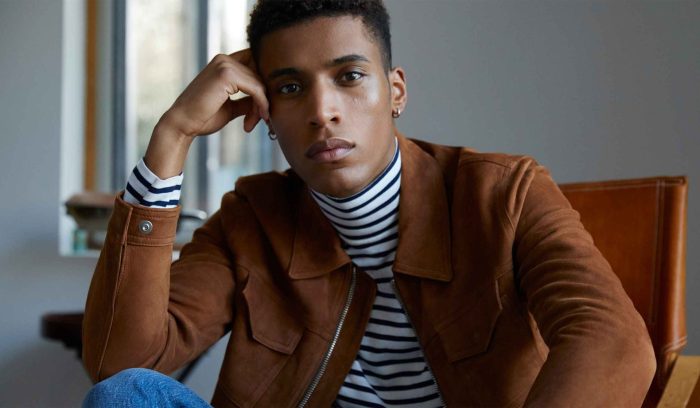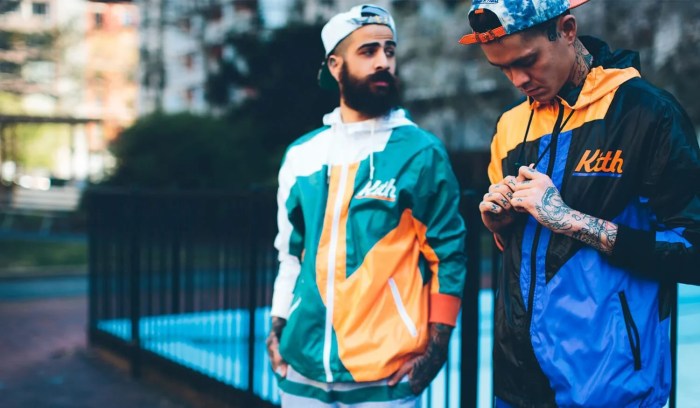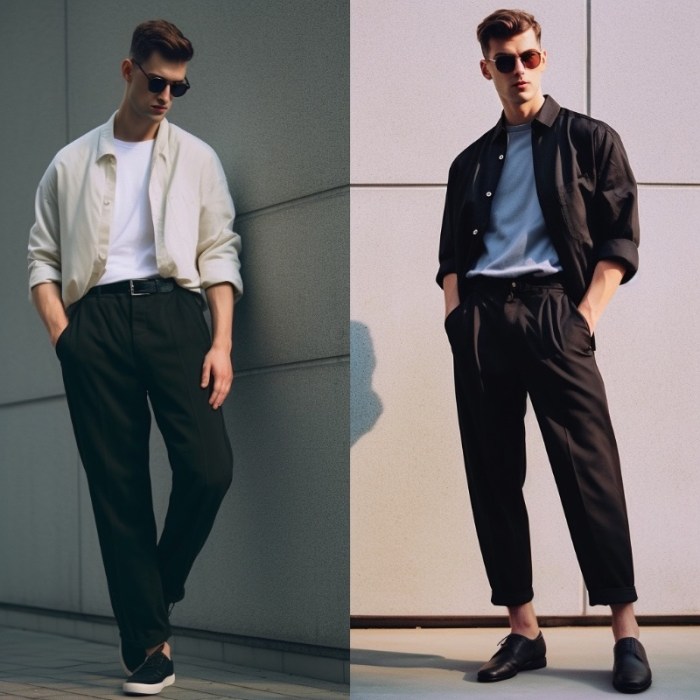Mens Fashion in the 1960s A Style Revolution
Defining 1960s Men’s Fashion
Men’s fashion in the 1960s – The 1960s witnessed a dramatic shift in men’s fashion, moving away from the conservative styles of the previous decades. This transformation was fueled by a confluence of cultural influences, technological advancements, and evolving social attitudes. The decade’s menswear is characterized by a diverse range of styles, reflecting the era’s dynamism and social upheaval.
Stylistic Shifts and Cultural Influences
Compared to the more formal and restrained styles of the 1950s, the 1960s saw a move towards more diverse and expressive menswear. The post-war prosperity and the burgeoning youth culture significantly influenced fashion choices. The rise of rock and roll, the counter-culture movement, and the increasing availability of affordable clothing options all contributed to this evolution. The influence of international styles, particularly from Britain and Italy, also played a crucial role.
Evolution of Menswear Silhouettes
Menswear silhouettes evolved significantly throughout the 1960s. The early 1960s retained some elements of the previous decade’s styles, with tailored suits and conservative colors remaining prevalent. The mid-1960s saw the emergence of the “Mod” look, characterized by slim-fitting suits, sharp lines, and bold colors. By the late 1960s, a more relaxed and casual style gained traction, influenced by the hippie movement and a general shift towards informality.
Dominant Styles of the 1960s

Source: apetogentleman.com
| Era | Key Garments | Silhouette | Key Features |
|---|---|---|---|
| Early 1960s | Tailored suits, button-down shirts, conservative ties | Slim to moderately slim | Clean lines, muted colors, conservative fabrics |
| Mid-1960s | Slim-fitting suits, turtleneck sweaters, Chelsea boots | Very slim, tailored | Bold colors, geometric patterns, Italian influence |
| Late 1960s | Denim jackets, bell-bottom trousers, paisley shirts | Relaxed, loose-fitting | Casual fabrics, vibrant colors, ethnic influences |
Key Garments and Accessories
The 1960s saw the rise of several iconic menswear items that continue to influence fashion today. The Mod style, in particular, had a profound impact, introducing sharp tailoring and a focus on details to menswear.
The Mod Style and Casual Wear
The Mod style, originating in Britain, emphasized clean lines, slim silhouettes, and a sophisticated aesthetic. This contrasted sharply with the more casual styles that emerged later in the decade. The rise of casual wear reflected broader social changes, with men increasingly embracing comfort and informality in their clothing choices. This shift was partly fueled by the increasing affordability of leisurewear and a growing rejection of formal attire.
Men’s fashion in the 1960s saw a significant shift from the previous decade’s more conservative styles. The clean lines and tailored fits of the 1950s, which you can read more about at men’s fashion in the 1950s , gave way to bolder choices. This included slimmer silhouettes, vibrant colors, and the introduction of new fabrics and patterns, reflecting the era’s social and cultural changes.
The decade ultimately paved the way for even more experimental styles in the years to come.
Iconic 1960s Menswear Items
Iconic 1960s menswear included items such as the Nehru jacket (a collarless, close-fitting jacket inspired by Indian fashion), slim-fitting suits in bold colors and patterns, button-down shirts in various fabrics and colors, and Chelsea boots (ankle-high boots with elastic side panels). Trench coats also enjoyed a surge in popularity, reflecting a certain sophistication and ruggedness. The rise of denim, especially in jackets and jeans, symbolized a move toward casual wear.
A Typical 1960s Male Outfit
Imagine a young man in a slim-fitting, dark grey suit, possibly a two-button style. The jacket is tailored neatly, showing a crisp silhouette. Underneath, a crisp white button-down shirt, perhaps with a subtle pattern. A simple, narrow tie in a muted color adds a touch of formality. The trousers are similarly slim-fitting, worn with black Chelsea boots.
This ensemble embodies the clean lines and sophistication of the early-to-mid 1960s Mod style.
The Influence of Subcultures
The 1960s witnessed the emergence of several youth subcultures, each with its own distinctive clothing style. These styles often challenged conventional menswear norms, reflecting the era’s rebellious spirit and desire for self-expression. The use of specific fabrics, colors, and accessories became powerful tools for identifying with and expressing subcultural affiliation.
Subcultural Clothing Styles

Source: apetogentleman.com
The Mods, known for their sharp suits and scooters, stood in contrast to the Rockers, who favored leather jackets and motorcycles. The Hippies, with their bohemian style, represented a further departure from mainstream fashion, embracing natural fabrics and flowing garments. These subcultures utilized clothing not merely as attire, but as a potent form of visual communication, showcasing their identity and beliefs.
Challenging Conventional Norms
Through their distinct styles, these subcultures challenged the established norms of men’s fashion. The Mods’ meticulous tailoring and sharp silhouettes contrasted with the prevailing casual styles. The Rockers’ rebellious leather jackets and biker boots symbolized a rejection of conformity. The Hippies’ embrace of unconventional fabrics and flowing garments represented a broader rejection of materialism and established social structures.
Subcultural Style Characteristics
- Mods: Slim-fitting suits, button-down shirts, tailored jackets, Chelsea boots, scooters.
- Rockers: Leather jackets, jeans, T-shirts, motorcycle boots, motorcycles.
- Hippies: Bell-bottom jeans, paisley shirts, flowing dresses, long hair, sandals.
Fabric and Color Trends
The fabrics and colors used in men’s clothing during the 1960s reflected the era’s evolving styles and subcultural influences. The availability of new synthetic fabrics also played a significant role in shaping the look and feel of menswear.
Prevalent Fabrics
Wool remained a popular fabric for suits and overcoats, offering warmth and a formal appearance. Cotton was widely used for shirts and casual wear, offering breathability and comfort. The introduction of synthetic fabrics like polyester and nylon led to the creation of new garments, such as wrinkle-resistant shirts and more affordable clothing options. These synthetic materials also influenced the overall look and feel of certain styles, contributing to the sharp, clean lines of the Mod look.
Dominant Color Palettes
The early 1960s favored muted tones, with greys, browns, and navy blues being common choices for suits and outerwear. The mid-1960s saw a shift towards brighter colors, with bold hues like orange, yellow, and green becoming popular, particularly among Mods. The late 1960s embraced even more vibrant colors and patterns, reflecting the psychedelic and bohemian influences of the time.
Earth tones and natural colors also gained prominence with the rise of hippie culture.
Fabric and Style Relationship
The relationship between fabric choice and overall style was significant. The crisp, tailored look of the Mod style relied heavily on fabrics that held their shape well, such as wool and cotton. The more relaxed styles of the late 1960s often used softer, more flowing fabrics like corduroy, velvet, and denim. The choice of fabric often helped define the overall aesthetic and message of a particular style.
A Typical 1960s Color Palette
A typical 1960s menswear palette might include: deep navy blue (representing formality and sophistication), vibrant orange (reflecting the energy of the Mod scene), muted olive green (representing a more earthy, natural style), and a rich burgundy (representing a more mature, sophisticated aesthetic). These colors, used in various combinations, reflect the diverse styles of the decade.
The Impact of Media and Icons
The media played a crucial role in shaping men’s fashion trends during the 1960s. Iconic figures in film, music, and sports influenced styles, while advertising helped to disseminate these trends to a wider audience.
Influential Figures
Actors like Steve McQueen and Sean Connery, with their effortlessly cool styles, significantly impacted menswear. Musicians like The Beatles and The Rolling Stones, with their distinctive looks, influenced the styles of young men. Athletes also played a role, with their athletic attire sometimes influencing casual wear. These figures, through their public image and appearances in media, became style icons, inspiring many to emulate their looks.
Media’s Influence on Menswear, Men’s fashion in the 1960s
Films, television shows, and music videos showcased various styles, influencing viewers’ fashion choices. Advertising campaigns further promoted specific trends and styles, creating a powerful synergy between media and fashion. The pervasive nature of media in the 1960s made it a significant driver of fashion trends, amplifying the impact of style icons and shaping public perception of what was considered fashionable.
Advertising’s Role
Advertising played a key role in promoting and disseminating men’s fashion trends. Magazines, television commercials, and billboards showcased the latest styles, influencing consumer preferences and driving sales. Advertising often linked fashion to ideals of masculinity, success, and social status, further impacting the adoption of certain styles.
Steve McQueen’s Impact
Steve McQueen, with his effortlessly cool and rugged style, popularized casual wear, influencing the adoption of items like denim jackets, turtleneck sweaters, and leather jackets. His on-screen persona and off-screen style projected an image of independent masculinity, making his choices highly influential among young men.
The Legacy of 1960s Men’s Fashion: Men’s Fashion In The 1960s
The influence of 1960s menswear continues to be felt in contemporary styles. Many elements from this era have been reinterpreted and reintroduced into modern clothing, demonstrating the enduring appeal of these classic designs.
Lasting Influences

Source: thefashionisto.com
The slim-fitting silhouette of the Mod style, for instance, regularly reappears in modern menswear. The casual styles of the late 1960s, particularly the use of denim and comfortable fabrics, have become staples of modern wardrobes. The bold colors and patterns of the era also continue to inspire contemporary designers. The enduring appeal of these styles speaks to their timeless quality and adaptability.
Modern Counterparts
The tailored suits of the early 1960s find echoes in modern slim-fit suits. The denim jackets of the late 1960s have evolved into various modern iterations, including designer denim jackets. The Chelsea boots remain a popular choice, and the use of bold colors and patterns in menswear is a common trend.
Then and Now
While the 1960s emphasized a balance between formal and informal styles, reflecting the social changes of the time, modern menswear offers a wider range of choices. The emphasis on self-expression remains, but the boundaries between formal and informal attire have blurred considerably. Today, there is greater acceptance of diverse styles and a broader spectrum of acceptable menswear than existed in the 1960s.
1960s vs. Modern Menswear
| 1960s Item | Modern Counterpart | Key Differences | Similarities |
|---|---|---|---|
| Slim-fitting suit | Slim-fit suit | Fabrics, details (buttons, lapels), fit variations | Tailored silhouette, clean lines |
| Denim jacket | Various denim jackets | Washes, details (stitching, patches), fit | Casual style, durable material |
| Chelsea boots | Chelsea boots, ankle boots | Materials, designs, sole styles | Ankle-high, close-fitting style |
FAQ Guide
What were some common fabrics used in 1960s men’s clothing?
Wool, cotton, and increasingly, synthetic fabrics like polyester and nylon, were prevalent.
Did men wear jewelry in the 1960s?
Yes, depending on the subculture. Some men, particularly Mods, incorporated jewelry like rings and necklaces into their outfits.
How did the Vietnam War affect men’s fashion?
Indirectly, the anti-war movement influenced the rise of more casual and less formal styles, reflecting a rejection of establishment norms.
What hairstyles were popular among men in the 1960s?
Styles ranged from the neatly groomed hair of the early 60s to longer, more textured styles associated with the counterculture movement later in the decade.













